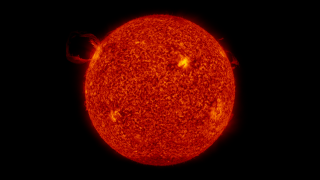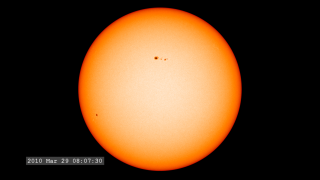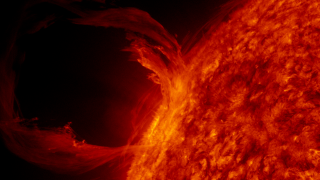If you're like me and have heard absolutely nothing about this project, never fear; I'll fill you in. The images of the Sun that the above story refers to were gathered by NASA's Solar Dynamics Observatory (SDO). The SDO is an orbiting observatory that was launched back in February. The goal of its 5-year mission is to provide data on the Sun that will allow us to better understand the glowing orb in the sky that is the source of all life on Earth, as well as to gain knowledge about Earth's precarious but fundamentally necessary relationship with it.
Over the past couple of months, while the craft was soaring over our heads outside the Earth's atmosphere, the SDO has been undergoing checks and testing to ensure that all of the on-board equipment is working properly. This equipment consists of three main instruments. The first is the Helioseismic and Magnetic Imager (HMI), which is primarily used for studying variability of the Sun's magnetic field and internal workings. The second instrument is the Extreme-Ultraviolet Variability Experiment (EVE), which examines what is known as extreme ultraviolet radiation produced by the Sun. EVE is capable of accurately measuring light with wavelengths lower than 30 nm, and it is this high-energy radiation that is responsible for heating the upper atmosphere of the Earth and thus giving rise to our ionosphere. The last piece of equipment is the Atmospheric Imaging Assembly (AIA), and it is capable of full-disc imaging of the Sun and will be taking constant video of the massive star throughout the SDO's mission lifetime.
The AIA, as one might expect, will be providing the coolest images and videos; at least for those of us not directly involved in solar research. It's these images that have been tossed around on the internet and shown in news stories. You can find the images at the SDO image gallery site, as well as videos at the briefing multimedia site, but I thought I would add a few of my favorites to this post. I hope you enjoy them. I sure have (the second one is my new desktop wallpaper).






